
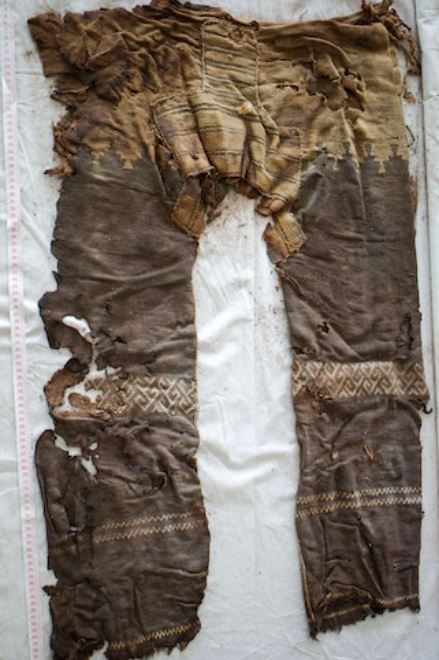
To many, it might seem that pants–or “trousers,” if you prefer–are a common, logical piece of clothing. Yet have you ever seen pictures of Greek philosophers, Roman emperors, or Egyptian pharaohs wearing pants?
Where do pants come from? When did they become popular?
(Featured picture shows representation of 3 Magi – Ravenna 500s).
Oldest Known Form of Pant-Like Clothing
There were some figurative drawings found in Siberia that seem to hint of some sort of leg coverings thousands of years ago; but the oldest known trousers were found in China and date around 1200 B.C. They were most likely invented for the sole purpose of riding horses in a comfortable manner, but they did not seem to have gained wide acceptance in the Chinese population at large.
Greeks and Romans: Trousers are Inferior!
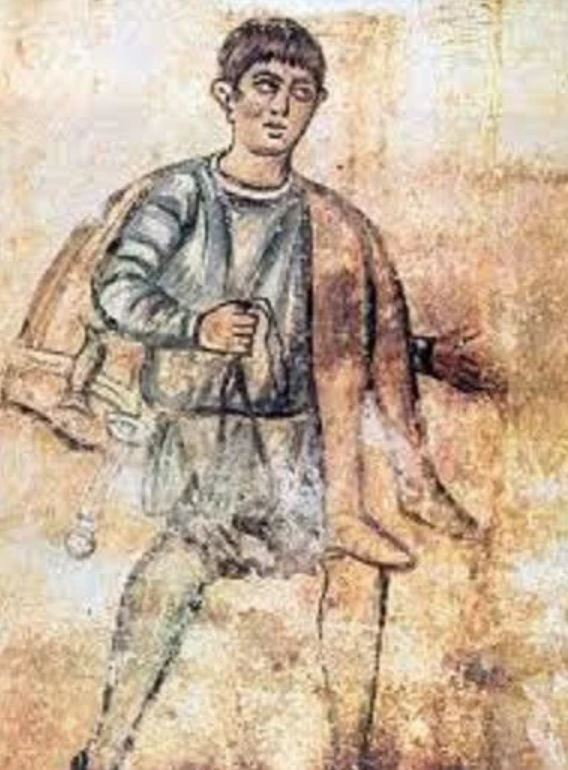
The Greeks were familiar with trousers and seemed to have come in contact with them through Eurasian nomads. In fact, Scythians, Armenians, and other horse riding tribes were know to wear pants–as the Chinese horse riders found, pants are just more logical for horse riding. The Hellenistic culture, however, found trousers ridiculous and did not adopt them.
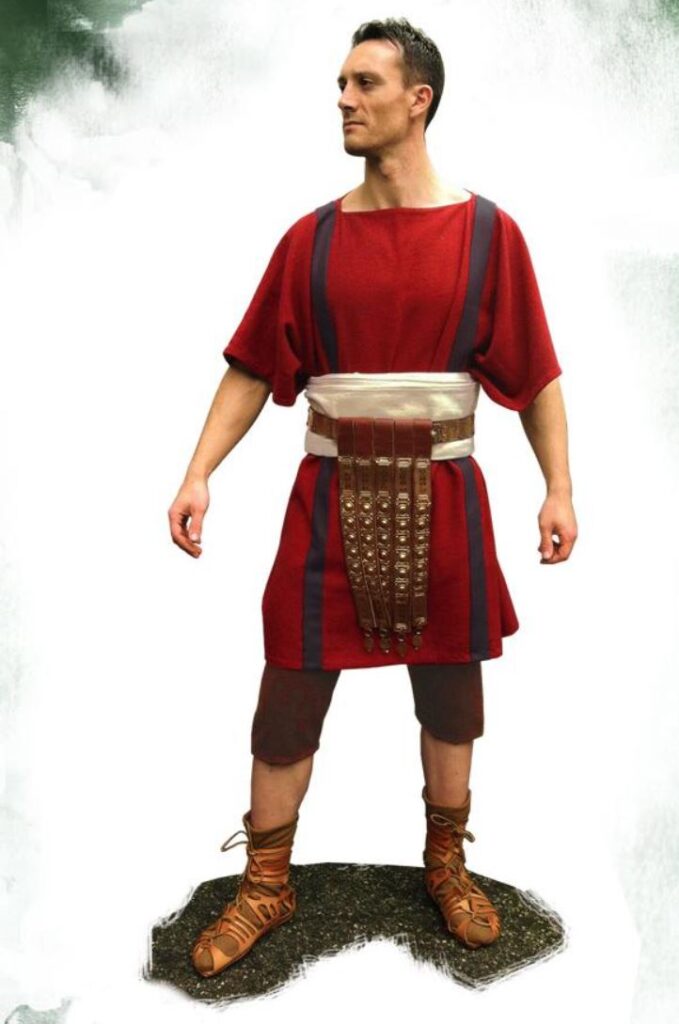
The Romans originally viewed trousers the same way as the Greeks: inferior clothing. After all, who needs leg coverings in balmy Mediterranean temperatures? Things started changing, however, when Romans ventured into colder climates, at which point two types of trousers became commonly worn under a short or full tunic. Even faced with the need for warmth in northern parts of the empire, Romans still thought that pants were barbaric, unmanly, and ludicrous. They were not a masculine and dignified thing to wear. For them, the tunic was the most elegant form of clothing available, but cold breezes into a person’s undercarriage can change minds quickly, and pants became much more acceptable in colder climes.
Early Roman Trousers and the Celtic Influence
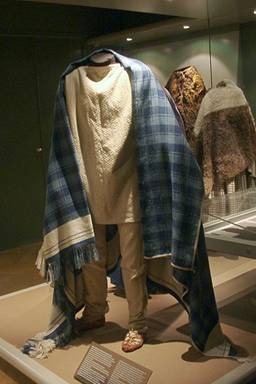
The first type of pants the Romans adopted were a tight-fitting garment that descended to the knee or to the calf. The Romans called them feminalia–not because they were considered feminine but because the name evolved from femoralia, meaning “covering the femur.”
The second type of trousers were the braccae. These trousers were more loose-fitting and covered the entire leg. The first Europeans to adopt these type of looser trousers were the Celts and, later, the Germanic tribes.
Pants in the Middle Ages
The later Eastern Roman Empire continued the now common Roman tradition of wearing pants under the tunic while Germanic invasions into western Europe spread the fashion even further in the original Roman Empire. With time, even the elite classes started wearing trousers, turning the practical and warm garment into a fashion statement while the tunic became relegated to ceremonial occasions. Charlemagne, for example, wore trousers most of the time, but for important occasions, he wore only his tunic.
In Byzantium, the capital of the Eastern Roman Empire, very short trousers were worn under a longer tunic, effectively becoming the first underpants.
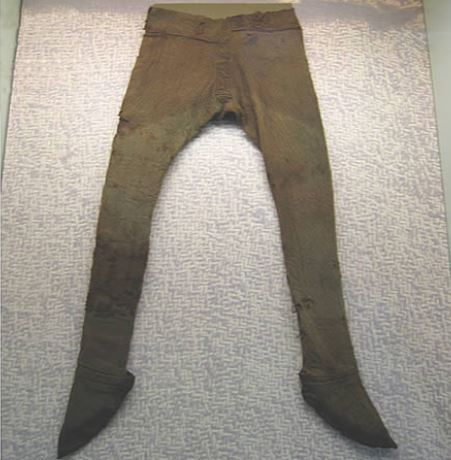
Pantalone and Pants
The word “pants” derives from the anglicized word pantalone, which is a reference to St. Pantaleone. St. Pantaleone was a 4th century physician and Christian martyr. He was known as the “all-merciful” and was decapitated by the emperor Diocletian. The transition from saint to a piece of clothing is a strange one:
For no known reason, St. Pantaleone’s name entered local folklore in Venice, and in the 1550s, he started being represented as a greedy and scheming being who always ended up on the losing side in a theatrical comedy. The popularity of the now villainous Pantaleone slowly spread throughout Europe as travelling actors reached France and Germany. Actors playing St. Pantaleone always wore red pants, which in English became known as pantaloons or pantalons. Shakespeare made the name famous in Jaques’s “All the World’s a Stage” speech in As You Like It.
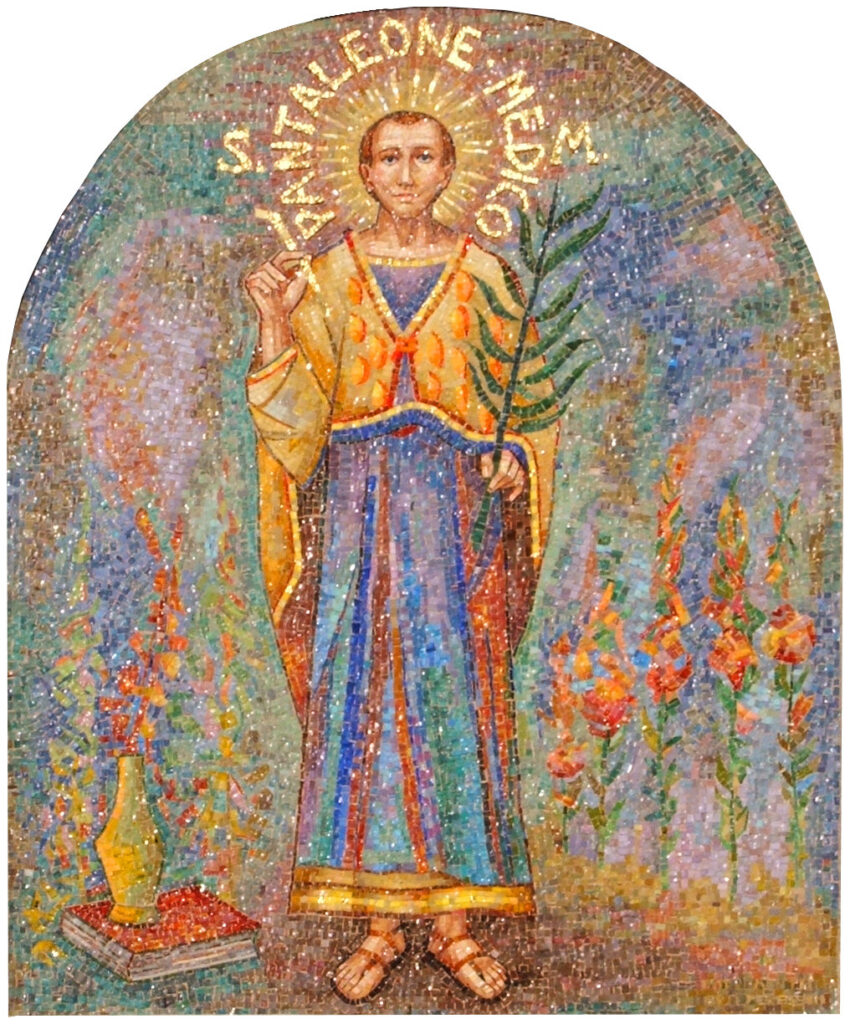
Pantalons, Pants, Trousers, and Slacks
In the 18th century, pantaloons reached America, where the name was shorten to pants. The Celts, on the others side of the Atlantic, called their long leg coverings trews, which developed into trousers. Slacks, instead, comes from the Latin. The Romans called the baggy type of trousers laxus, meaning “loose,” which eventually evolved to slacks.
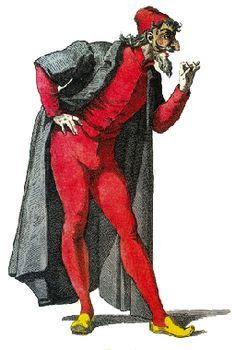
As stated before, pants were commonly used in ancient China by both men and women. Even in Ancient Greece, some pottery depicts warrior women wearing pants. For centuries, it was acceptable for lower class women to wear working pants. It was only during the Middle Ages that women in pants started to be frowned upon. Women’s pants finally made a comeback in the 20th century.
References To Know More
The History of ‘Pants’ | Merriam-Webster (merriam-webster.com)
Trousers in History (factmonster.com)
Trousers – Wikipedia
A Brief History of Trousers (kingandallen.co.uk)
A brief history of when (and why) women started wearing pants | by Sneha Konda | Medium